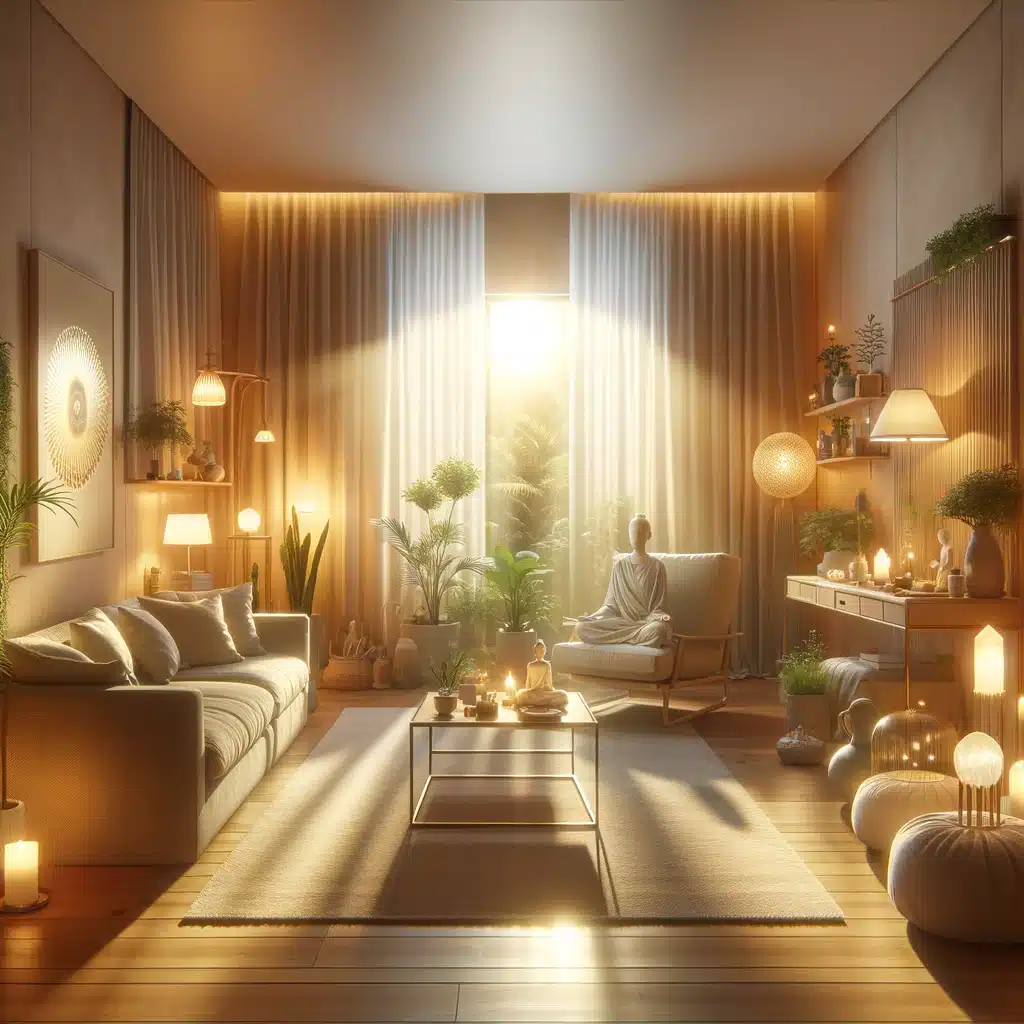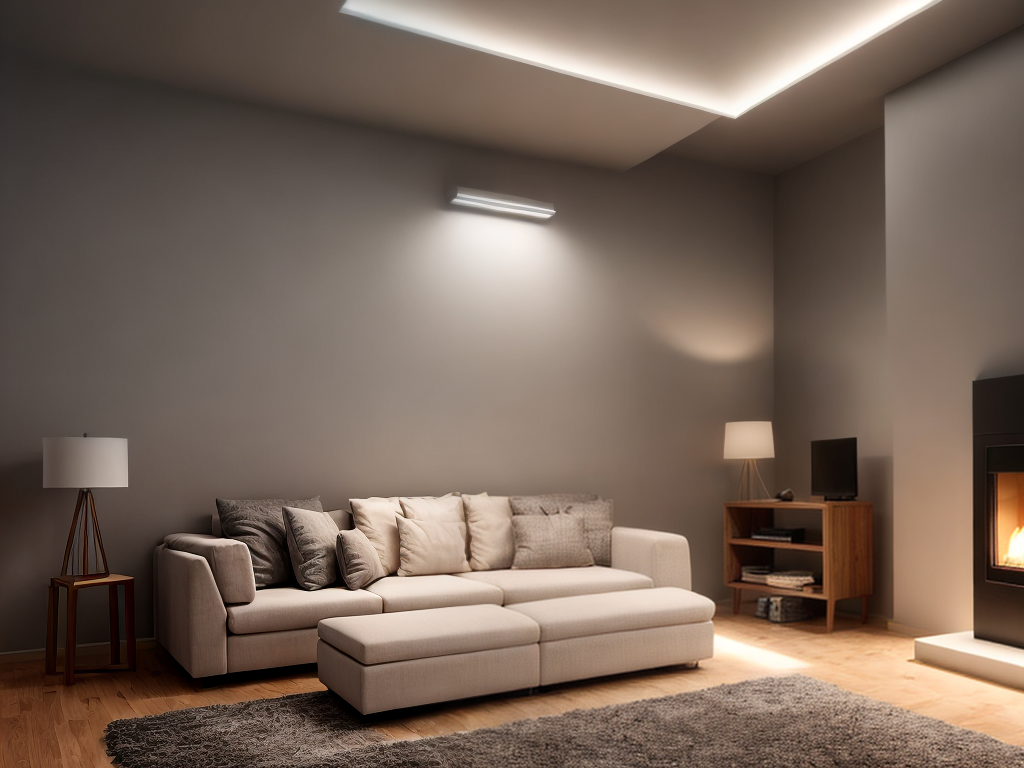As a lighting enthusiast, I am thrilled to shed light on the topic of LED lights. Like a shining beacon in the darkness, these energy-efficient wonders have revolutionized the way we illuminate our world. In this overview, we will explore the various types of LED lights, from their historical roots to their modern-day applications. With their numerous advantages, such as long lifespan and low energy consumption, LED lights have become the go-to choice for residential, commercial, and industrial lighting needs. Whether you are looking for the perfect LED lights for your home, office, or warehouse, this guide will help you navigate through the different shapes, sizes, and functionalities available, so you can make an informed decision and brighten up your space with confidence.
Key Takeaways
- LED lights come in various shapes, sizes, and colors, providing versatile and customizable options for different lighting needs.
- LED lights are energy-efficient and have a long lifespan, making them a superior choice for residential, commercial, and outdoor lighting.
- LED lights are eco-friendly as they are free of toxic chemicals and help reduce carbon emissions.
- LED lights are durable and resistant to shocks, vibrations, extreme temperatures, making them ideal for industrial settings.
A Brief History of LED Lights
Starting my research on LED lights, I discovered the fascinating history behind this innovative technology. LED light evolution has been a remarkable journey from its humble beginnings to the energy-efficient lighting solution we have today. The concept of the LED, or light-emitting diode, was first introduced in the 1900s, but it wasn’t until the 1960s when practical applications started to emerge. At first, LEDs were only available in red, but advancements in materials and technology expanded the color spectrum. This breakthrough allowed for the development of LEDs in various colors, including green, blue, and white. The impact on energy consumption has been significant, as LED lights are known for their high efficiency and long lifespan. They consume less energy and last much longer compared to traditional incandescent bulbs, making them an environmentally friendly choice.
Advantages of LED Lighting
LED lighting offers numerous advantages over traditional lighting options, making it a superior choice for both residential and commercial applications. Here are some key advantages of LED lighting:
-
Energy Efficiency: LED lights are highly efficient, converting almost all of the energy they consume into light. This results in significant energy savings compared to traditional lighting sources, such as incandescent bulbs.
-
Long Lifespan: LED lights have an exceptionally long lifespan, lasting up to 25 times longer than traditional bulbs. This not only reduces the frequency of replacements but also lowers maintenance costs.
-
Durability: LED lights are built to be durable and resistant to shocks, vibrations, and extreme temperatures. This makes them ideal for outdoor and industrial applications.
-
Eco-Friendly: LED lights are free of toxic chemicals, such as mercury, which are commonly found in traditional bulbs. Additionally, their energy efficiency helps reduce carbon emissions, making them a more sustainable lighting option.
With their energy efficiency, long lifespan, durability, and eco-friendliness, LED lights provide a compelling choice for those seeking superior lighting solutions.
Different Shapes and Sizes of LED Lights
How do LED lights come in different shapes and sizes? LED lights are versatile and can be found in a variety of shapes and sizes to suit different needs and applications. From traditional bulb-shaped LEDs to flexible LED strips, there is a wide range of options available. LED lights also come in different colors, allowing for customization and creativity in lighting design. The benefits of using LED lights include energy efficiency, long lifespan, durability, and environmental friendliness. LED lights are also known for their instant brightness, low heat emission, and ability to emit light in specific directions. This makes them ideal for various settings, including residential, commercial, and outdoor lighting.
| Shapes | Sizes | Colors |
|---|---|---|
| Bulb | Miniature | Warm white |
| Tube | Standard | Cool white |
| Spotlight | Industrial | Daylight |
| Strip | Micro | Red |
| Panel | Nano | Blue |
| Downlight | High power | Green |
| Floodlight | RGB (multicolor) | |
| Candle | Amber | |
| Globe |
LED Lights for Residential Use
After researching the various types of LED lights available, I found that residential use is a common application for these energy-efficient lighting options. LED lights are revolutionizing residential lighting by offering numerous benefits. Here are some key advantages of using LED lights for residential lighting:
- Energy Efficiency: LED lights are highly energy-efficient, consuming significantly less electricity compared to traditional incandescent bulbs. This leads to lower energy bills and reduces the carbon footprint.
- Long Lifespan: LED lights have an impressive lifespan, lasting up to 25 times longer than incandescent bulbs. This means fewer replacements and less maintenance.
- Versatility: LED lights come in various shapes, sizes, and color temperatures, allowing homeowners to create the desired ambiance in different rooms.
- Eco-Friendly: LED lights do not contain harmful substances like mercury, making them safer for the environment and easier to dispose of.
LED Lights for Commercial Use
Residential use is just one of the many applications for LED lights; another common use is for commercial lighting. LED lights are widely used in commercial settings due to their energy efficiency and cost effectiveness. Compared to traditional lighting options such as incandescent or fluorescent lights, LED lights consume significantly less energy and have a longer lifespan. This not only reduces energy costs for businesses but also minimizes the need for frequent replacements, resulting in lower maintenance expenses. LED lights are also highly adaptable and can be used for various commercial purposes, from office buildings and retail stores to warehouses and outdoor signage. Their ability to provide bright and focused lighting makes them ideal for enhancing visibility and creating a comfortable and productive work environment.
| Energy Efficiency | Cost Effectiveness |
|---|---|
| Consumes less energy | Reduces energy costs |
| Longer lifespan | Lower maintenance expenses |
| Provides bright and focused lighting | Enhances visibility |
| Adaptable for various commercial purposes | Creates a comfortable work environment |
LED Lights for Industrial Use
LED lights are widely utilized in industrial settings due to their various benefits and applications. Industrial lighting plays a crucial role in ensuring optimal visibility and productivity. Here are some key reasons why LED lights are preferred for industrial use:
-
Energy efficiency: LED lights consume significantly less energy compared to traditional lighting options. This results in reduced electricity costs and lower carbon emissions.
-
Long lifespan: LED lights have an exceptionally long lifespan, which means less frequent replacements and maintenance. This is especially beneficial in industrial environments where downtime for maintenance can be costly.
-
Durability: LED lights are built to withstand harsh conditions commonly found in industrial settings, such as high temperatures, vibrations, and impact resistance.
-
Instantaneous lighting: LED lights provide instant illumination, eliminating the need for warm-up time and allowing for immediate work to commence.
With these advantages, LED lights are the ideal choice for industrial lighting needs, combining energy efficiency, durability, and cost-effectiveness.
Choosing the Right LED Light for Your Needs
When considering the right LED light for my needs, I frequently rely on factors such as energy efficiency, brightness, and color temperature. Energy efficiency is a crucial consideration when selecting LED lights. LED lights are known for their high energy efficiency, consuming less electricity compared to traditional lighting options. This not only helps in reducing energy costs but also contributes to a greener environment. Brightness is another important factor to consider. LED lights come in a range of brightness levels, allowing me to choose the right intensity of light for different spaces and purposes. Lastly, color temperature is a key consideration as it determines the mood and ambiance of a space. Whether I need warm, cool, or neutral lighting, LED lights offer a variety of color temperature options to suit my preferences. Taking these factors into account ensures that I choose the right LED light that meets my specific needs.




